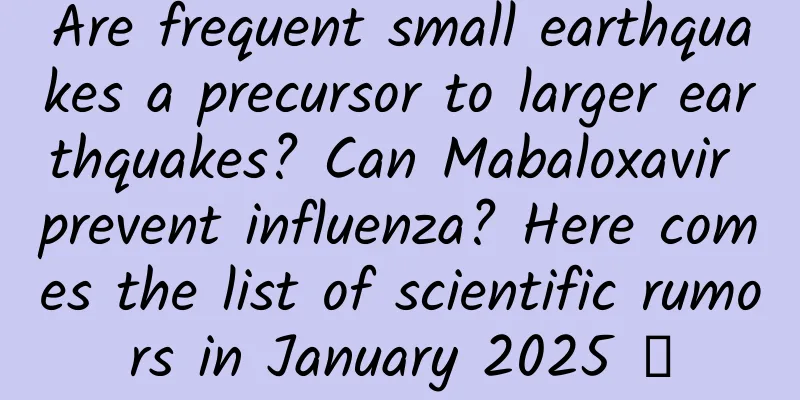The "treasure" of the night sky - the Andromeda Galaxy, can we observe it with our naked eyes?

|
Author | Feng Ziyang Review | Dong Chenhui Editor | Zhao Jingyuan Ultraviolet image of the Andromeda Galaxy taken by the Galaxy Evolution Explorer (GALEX). Image credit: NASA The Andormeda Galaxy is located northwest of Andromeda ν in the sky, at the left knee of Andromeda. It appears to the naked eye as a dim elliptical light spot. According to the Hubble-de Vaucouleurs galaxy classification, the Andromeda Galaxy is a SA(s)b type galaxy, where SA stands for a normal spiral galaxy (not a barred spiral galaxy), (s) indicates a galaxy without a ring structure, and b means that the spiral arms are relatively loose. It is one of the few extragalactic objects visible to the naked eye, with a diameter of about 150,000 light-years, nearly twice the diameter of the Milky Way. It is about 2.5 million light-years away from the Earth and is the closest large extragalactic galaxy. The Andromeda Galaxy and its companion galaxies (M32, M110, etc.), the Triangulum Galaxy M33, the Large and Small Magellanic Clouds, and our Milky Way, and dozens of other galaxies constitute the Local Group, of which the Andromeda Galaxy is the largest. The locations of some galaxies in the Local Group. Image source: Wikipedia The Andromeda Galaxy is located at right ascension 00h42m44.33s, declination 41°16′07.5″ (epoch J2000) on the celestial sphere. Its total apparent magnitude is about 3.4, making it the brightest galaxy among the Messier objects. It can be barely seen with the naked eye even in areas with level 5 light pollution. Its apparent size is 3°09′06.00″×1°01′42.00″, which is three times larger than the apparent area of the famous Orion Nebula. Its common numbers include M31, NGC 224, PGC 2557, UGC 454, etc. The Andromeda Galaxy's location on the sky. Image credit: Stellarium The Andromeda Galaxy has been observed by many people for a long time and is well known due to its bright apparent magnitude, but the earliest surviving record is The Book of Fixed Stars, written by Persian astronomer Abd al-Rahman al-Sufi around 964 AD, which describes the Andromeda Galaxy as "a small cloud." In 1612, German astronomer Simon Marius first used an astronomical telescope to observe the Andromeda Galaxy and recorded it. He described this celestial body as "a ball of fire seen from the tip of a bull's horn". During the Qing Dynasty, my country added 23 stars to Kuixiu, and the Andromeda Galaxy was one of them. It was called Kuixiu Zeng 21. In 1764, French astronomer Charles Messier noticed this fuzzy little cloud while searching for comets and included it in his star catalog, numbering it as M31. In 1850, Irish astronomer William Parsons, 3rd Earl of Rosse, first drew a sketch of it. In 1888, Welsh astronomy enthusiast Isaac Roberts took the first photo of it. Roberts' first photograph of the Andromeda Galaxy. Image source: Wikipedia There have been many different opinions about the true identity of this fuzzy "little cloud" in the night sky for hundreds of years. For a long time, people believed that it was a nebula located in the Milky Way, so it was also mistakenly called the Andromeda Nebula. In 1745, French physicist Pierre Maupertuis first speculated that it might be a celestial system composed of many stars. In 1755, German philosopher Immanuel Kant also pointed out that this type of "spiral nebula" should be a celestial system similar to the Milky Way, rather than a nebula in the Milky Way. In 1785, British astronomer William Herschel also held a similar view, but his estimated distance was obviously wrong - he believed that the Andromeda Nebula was no more than 2,000 times the distance of Sirius (that is, 17,000 light-years) away from us. In 1850, German naturalist Alexander Hunboldt proposed the concept of "island universe" in his book Cosmos: A Sketch of a Physical Description of the Universe. He likened the countless celestial systems in the universe, similar to the Milky Way, to small islands in the ocean. The Shapley (left)-Curtis (right) debate. Image source: giganet.sampa.br However, it is not easy to prove that spiral nebulae are celestial systems outside the Milky Way. There are contradictions among various observational data (for example, although the stars in some nebulae can be decomposed, it is difficult to distinguish the stars in other nebulae). This has made the island universe theory controversial and formed a century-long island universe dispute in the history of astronomy. This issue also led to the Shapley-Curtis Debate (Great Debate) in 1920. American astronomer Harlow Shapley believed that spiral nebulae similar to the Andromeda Nebula were part of the Milky Way. American astronomer Heber Curtis believed that spiral nebulae were outside the Milky Way and were "island universes" like the Milky Way. As early as several years ago, Shapley had calculated the size of the Milky Way through the period-luminosity relationship of Cepheid variables [the period-luminosity relationship is the relationship between absolute magnitude and light variation period, which can be used to measure distance. American astronomer Henrietta Leavitt discovered and established this relationship in 1908 and 1912]. His calculation results pointed out that the diameter of the Milky Way is 300,000 light years, which is larger than today's cognition. It seems that the distance of these spiral nebulae needs to be measured to resolve this dispute. Hubble used the Hooker Telescope to take a picture of the Andromeda Galaxy on October 6, 1923. He initially discovered three novae in the picture and marked them with "N", but he later discovered that the "nova" on top was actually a Cepheid variable star, so he changed its label to "VAR!", the first Cepheid variable star discovered in the Andromeda Galaxy. Image source: NASA Since 1923, American astronomer Edwin Hubble has discovered several Cepheid variables in the Andromeda Nebula, and measured its distance using the period-luminosity relationship, finding it to be 900,000 light-years away. Although the distance Hubble measured seems to be too small now, it is far beyond the range of the Milky Way known at the time, breaking people's cognition and ultimately proving that spiral nebulae including the Andromeda Nebula are celestial systems independent of the Milky Way, and today they are called galaxies. The Andromeda Galaxy is undoubtedly the most studied extragalactic galaxy. Since we are located in the Milky Way, as the saying goes, "We cannot see the true face of Mount Lu because we are in it", the range of the Milky Way we can observe is very limited, and we cannot get a glimpse of the whole picture. We can only use computers to simulate its structure. Compared with other galaxies, the Andromeda Galaxy is closer, brighter, and its structure is very similar to that of the Milky Way. These factors make it a popular celestial body for scientific research. Astronomers can understand the structure and evolution of our own Milky Way by observing the Andromeda Galaxy. A partial view of the Andromeda Galaxy as captured by the Hubble Space Telescope. Image credit: NASA For astronomy enthusiasts, the Andromeda Galaxy is a celestial body with great ornamental and scientific value. Both newbies and experts can easily find it. In addition to the two common ways of playing visually and photographing, astronomy enthusiasts can also search for novae in the Andromeda Galaxy through the Public Supernova Search Project (PSP, https://nadc.china-vo.org/psp/), their own equipment or remote telescopes to obtain data, thereby making their best efforts to contribute to scientific research. It is estimated that about 40 novae explode in the Andromeda Galaxy every year, and there are many professional/amateur sky survey projects dedicated to searching for these elusive celestial bodies. Although the novae in the Andromeda Galaxy are usually not as bright as those in the Milky Way due to their great distance, their maximum brightness can often reach about 17.5 magnitudes, which is still within the capabilities of amateur equipment. Xiaoxing can proudly say that as the earliest amateur observatory in my country to carry out sky survey observations, Xingming Observatory has currently discovered about 60 novae in the Andromeda Galaxy, and its performance in recent years has been among the best in the world. Starbridge method to find the Andromeda Galaxy. Image source: Stellarium The Andromeda Galaxy can be observed from summer to early spring of the following year, especially in autumn and winter. To find this galaxy, you can use the Autumn Quadrilateral: follow the two stars on the north side of the Autumn Quadrilateral [Ambly (Pegasi) and Ambly (Alpha Andromeda)] all the way east, and find the stars Delta (Andromeda) and Beta (Andromeda) in turn. Follow Beta (Andromeda) to the northwest and you will find Mu (Andromeda). Double the line connecting Beta (Andromeda) and Mu (Andromeda) to find the Andromeda Galaxy. The Andromeda Galaxy is one of the most famous and beautiful extragalactic galaxies, and it has existed for billions of years. Studies have shown that the Andromeda Galaxy is rushing towards the Milky Way at a speed of 300 kilometers per second, and will merge with the Milky Way to form a new galaxy in 4 billion years, but we obviously cannot see this event with our own eyes. However, in the long history, the Andromeda Galaxy has always been with us, witnessing the great journey of human exploration of the universe. References 1.Andromeda Galaxy,Wikipedia,https://en.wikipedia.org/wiki/Andromeda_Galaxy 2. M31, SEDS Messier Database, http://www.messier.seds.org/m/m031.html 3. The Universe Island Controversy, Su Yi, Chapter 6, New Introduction to Astronomy, 4th edition 4. Anromeda Galaxy,LEIF J. ROBINSON,,Philips Astronomy Encyclopedia 5. AnromedaGalaxy,NASA,https://www.nasa.gov/missions/chandra/andromeda-galaxy-vibaj/ For more questions about the Andromeda Galaxy, please leave a message in the comment area and Xiaoxing will answer them for you one by one~ Follow the WeChat public account/Sina Weibo/Science Popularization China/Toutiao account "Xingming Observatory" and walk through the stars with Xiaoxing and harvest romance~ |
>>: How does a "membrane" promote sustainable afforestation?
Recommend
Medical Talk | A preliminary study on the origin of viruses: Hey! Where did the virus come from?
...
Evaluation of 16 Bluetooth headsets: Are the thousands of yuan headsets only good for making noise?
Since we launched the call for submissions in Jan...
The efficacy and function of sheep red
The essence of traditional Chinese medicine is to...
What are the effects and functions of Astragalus flower
Speaking of Astragalus flower, it is actually a s...
Will a love of salty food really make you gain weight and get fat? Seven tips to prevent "salty fat"
When it comes to healthy eating and reducing oil ...
Monetate: Survey shows Mac users are more crazy about online shopping
Nowadays, many users are getting more and more ac...
Snowfall! Rainfall and cooling! Severe convection is coming. How can we prevent it?
Large-scale rain and snow weather is coming! Heav...
Can I drink Jiaogulan tea when I feel dizzy?
Dizziness is the most common phenomenon in our li...
August 2024 "Science" Rumors List: Children's medication, half the adult dose? Can choosing good sports equipment improve physical test scores?
1. Can “back sunning” cure all diseases only if d...
Is it good to eat black wolfberry at night?
Many people don’t know that some foods are actual...
Be careful, a family of three went to the hospital after eating overnight watermelon! There is a substance in watermelon that is higher than that in tomatoes?
Recently, in Xi'an, Shaanxi, the news #A fami...
Failure and sinking in the water: Who is the navy’s “second enemy” that has brought down the aircraft carrier?
On September 4, a piece of news about the loss of...
Why are there always so many small animals around capybaras?
If life is a game, then friends are the most spec...
comScore: U.S. e-commerce retail sales increased 10% year-on-year in the 2013 holiday shopping season
According to data released by comScore, an Americ...









